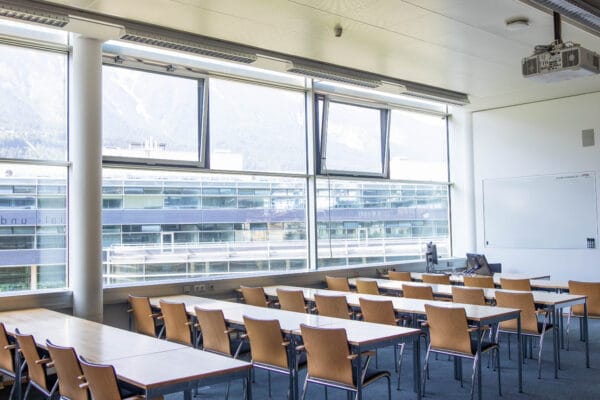
NAME:
MCI - SR 303
BUILDING:
Management Center Innsbruck
FLOOR:
3
TYPE:
Seminar Room
CAPACITY:
54
ACCESS:
Only Participants
EQUIPMENT:
Beamer, Handicapped Accessible, PC, Sound System, Whiteboard, WLAN (Eduroam), Microphones
Seasonal ground frost limits water infiltration and promotes surface runoff at the local scale. Research on this topic does not converge toward a single model of hydrological behavior for seasonally frozen soils. These soils are alternately described as significantly increasing runoff rates, increasing them in an uncertain manner, or not increasing them at all. We found very few studies that attempted to characterize infiltration in frozen soil, and only one has proposed a relationship between soil ice content and infiltration capacity. Collecting more data about that relationship across various soil types would significantly improve our understanding and modeling of winter and cold hydrological processes. Data collection of infiltration capacity in frozen ground is a challenge because the fact that the soil is frozen causes most standard methods to be ineffective.
Over the past two years, we have been developing a method to measure soil infiltration capacity when frozen, a challenging task with many obstacles. This data is crucial for understanding the relationship between soil ice content and infiltration capacity. Currently, most hydrological models assume that frozen soil prevents infiltration entirely. However, field observations of groundwater recharge during frozen periods suggest otherwise. Our hypothesis is that infiltration remains possible even in frozen ground, and we aim to determine the extent to which this occurs.
To collect infiltration capacity data, we used a double-ring infiltrometer but encountered several challenges. Since frozen soil prevents infiltrometer insertion into the ground, they must be installed weeks or months in advance, when the soil is unfrozen. Given the high cost of traditional infiltrometers, we designed more affordable alternatives using flexible plastic. However, these lacked sharp edges, causing slight soil disturbances around the rings and leading to leakage when collecting data. After testing multiple solutions, we found a promising method to mitigate this issue.
When facing important challenges like this one, we found that sharing thoughts and exchanges of ideas are a great help to overcome difficulties and make advancements in science.
